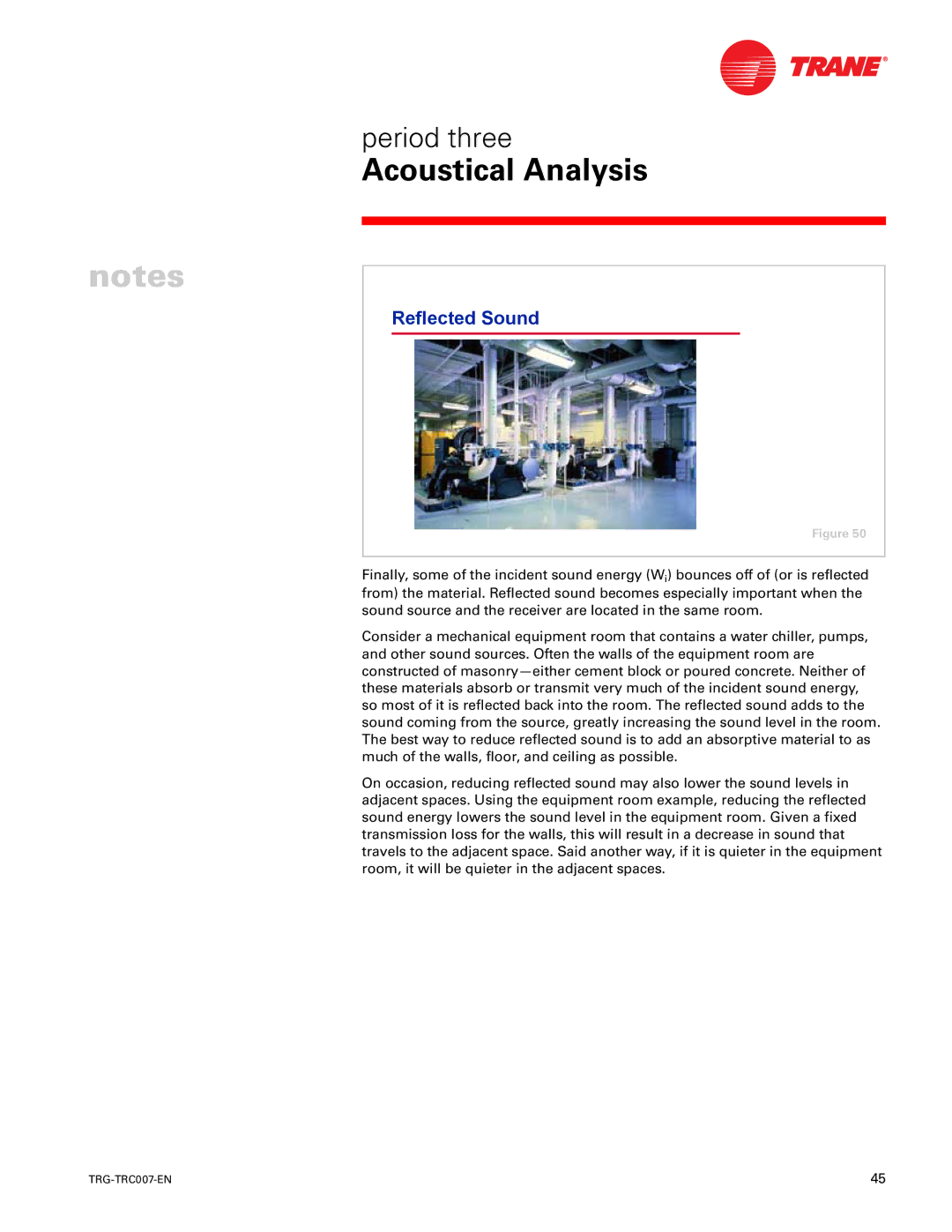
period three
Acoustical Analysis
notes
Reflected Sound
Figure 50
Finally, some of the incident sound energy (Wi) bounces off of (or is reflected from) the material. Reflected sound becomes especially important when the sound source and the receiver are located in the same room.
Consider a mechanical equipment room that contains a water chiller, pumps, and other sound sources. Often the walls of the equipment room are constructed of
On occasion, reducing reflected sound may also lower the sound levels in adjacent spaces. Using the equipment room example, reducing the reflected sound energy lowers the sound level in the equipment room. Given a fixed transmission loss for the walls, this will result in a decrease in sound that travels to the adjacent space. Said another way, if it is quieter in the equipment room, it will be quieter in the adjacent spaces.
45 |
